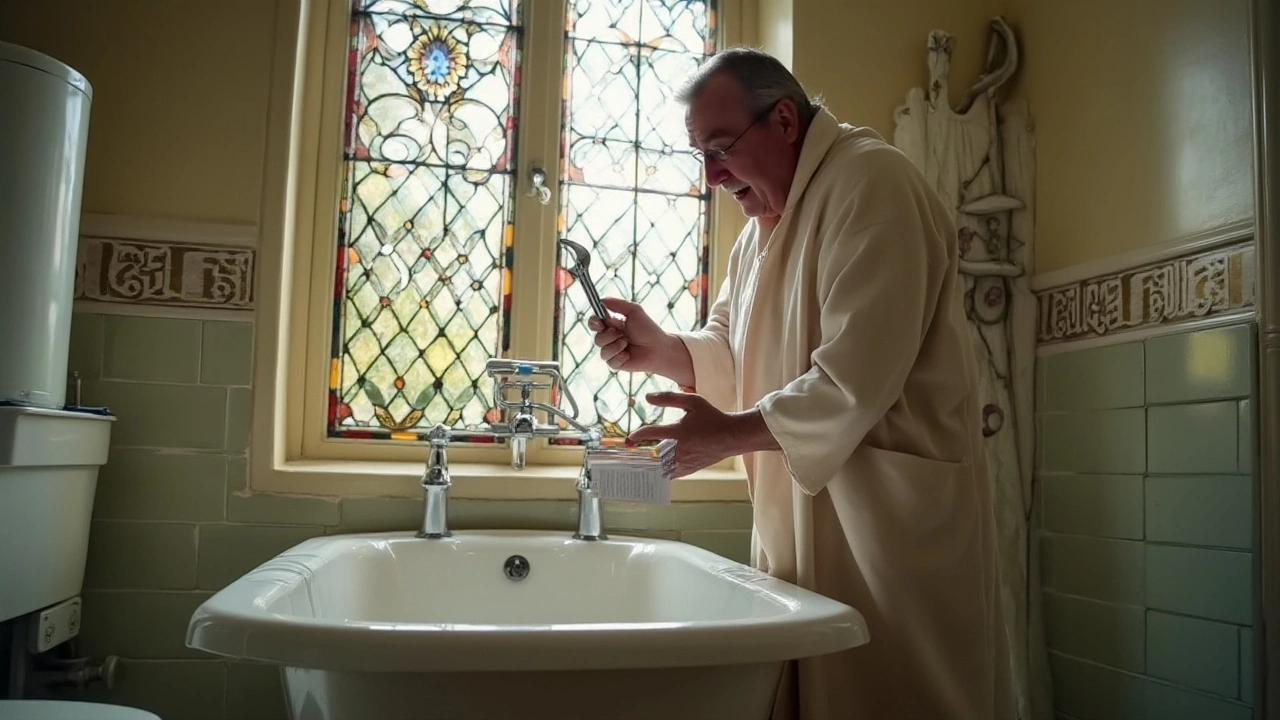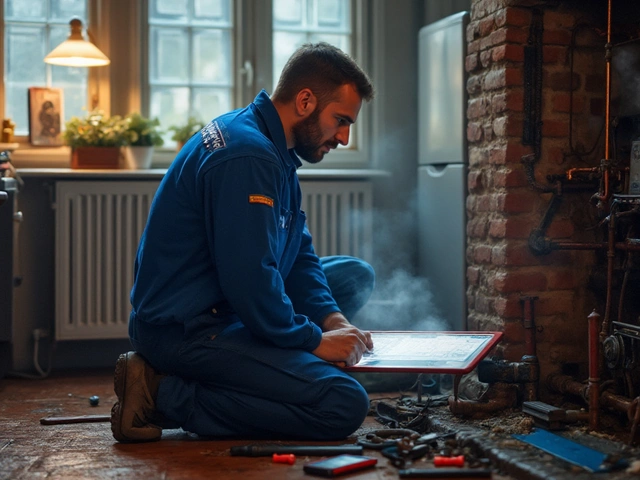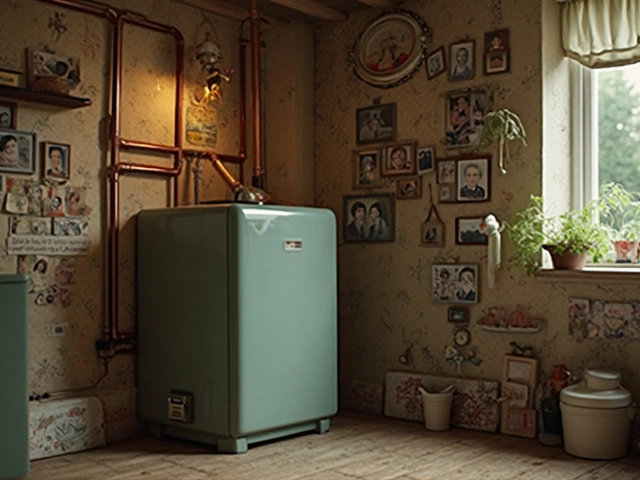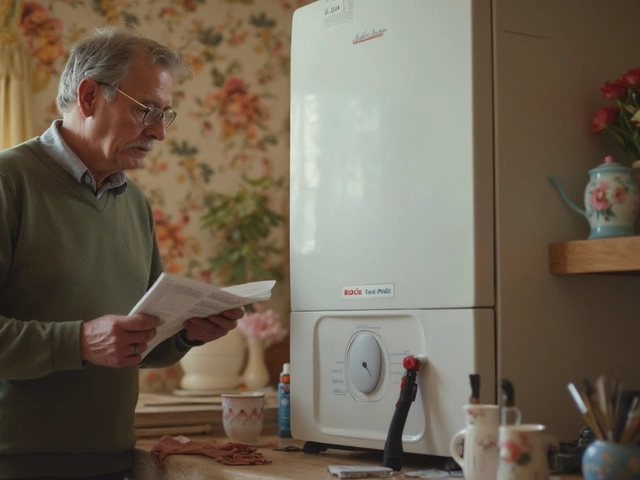Nothing quite disrupts the refreshing tranquility of a hot shower like a sudden blast of cold water. When your once reliable water heater starts running cold, it’s often a sign that something's amiss. Understanding the root cause can help save you both time and potential repair costs. Whether it's a simple fix or a more complex issue, recognizing the signs early can prevent further complications down the road.
In this article, we explore several reasons why your water heater may have taken an unplanned vacation, leaving you in the cold. From thermostat malfunctions to dreaded sediment clogs, getting to the bottom of the issue might be easier than you think. Join us as we unlock the secrets of maintaining a consistently hot water supply in your home.
- Common Causes of Cold Water Issues
- Thermostat Troubles and Solutions
- Addressing Sediment Buildup
- When to Call a Professional
Common Causes of Cold Water Issues
When faced with an unexpected splash of cold water, it’s essential to pinpoint the issue before reaching for the phone. A major reason your water heater might be delivering chilly showers could be due to something as simple as the thermostat setting. A mistakenly lowered thermostat will reduce the overall temperature of your hot water supply, so it’s important to first check if it has been accidentally adjusted. This component is crucial for regulating the heat, and even a slight miscalibration can lead to noticeable changes in water temperature.
Another frequent culprit is sediment buildup inside the tank. Over time, minerals like calcium and magnesium in the water can settle at the bottom of the tank, forming an insulating barrier between the heating elements and the water itself. This layer of sediment decreases your heater’s efficiency, making it work harder than necessary and potentially shortening its lifespan. Regular flushing of the tank can prevent these mineral deposits from clogging up your system, keeping your hot water flowing consistently.
Let's not forget the possibility of a faulty or disconnected pilot light, particularly in gas water heaters. If the pilot light goes out, your water heater's burner won't ignite, leading to a lack of hot water entirely. Igniting the pilot light is typically a straightforward fix, but if you’re unfamiliar with the process, consulting your heater’s manual or a trusted professional can guide you safely. Ensuring proper gas supply and ventilation also contributes significantly to your heater running smoothly.
"A cold shower might wake you up, but figuring out your water heater problem keeps you warm," says Michael Gonzales, a renowned home maintenance expert. His advice emphasizes being proactive in maintaining your home’s essential systems.
Occasionally, the issue may stem from something more technical, such as a malfunctioning heating element in an electric water heater. These elements are responsible for electrically heating the water, and when they burn out or degrade, the heater fails to deliver the expected warmth. Testing and replacing a faulty element requires caution, as dealing with electrical components poses risks without the right knowledge.
Finally, older water heaters may simply be nearing the end of their useful life. Most units have a lifespan of around 10 to 15 years, and as they approach this age, efficiency naturally declines. At this point, comparing repair costs with replacement options may save you more frustration down the line. Proactive checks and understanding typical signs of failure help in planning whether repairs or saying goodbye to your old friend is your best course of action.

Thermostat Troubles and Solutions
The thermostat is a fundamental component in your water heater system, silently orchestrating the safety and comfort of your hot water supply. Despite its significance, it's often overlooked until something goes awry. When your hot water unexpectedly turns cold, a faulty or incorrectly set thermostat could be the culprit. Essentially, the thermostat controls the temperature of the water, instructing the heating element when to turn on and off. If it's not functioning properly, your water heater may not adequately heat the water, causing the temperature to fluctuate unexpectedly.
If you notice that your water isn't reaching the desired temperature, it's worth checking the thermostat settings. Sometimes, users mistakenly adjust it to a lower setting, which can easily be corrected. Typically, the recommended setting is around 120 degrees Fahrenheit, which is hot enough for household needs while minimizing the risk of scalding. This balance is crucial not only for comfort but also energy efficiency. Studies have shown that for every 10-degree reduction in water heater temperature, you can save about 3-5% on your energy bill.
In some cases, the thermostat might simply be broken. This often occurs in older models or units that have not been regularly maintained. A multimeter tool can help determine if the thermostat is functioning correctly. If not, replacing it might be necessary. Manufacturers typically suggest thermostat replacement as a next step, largely due to the difficulties of repairing such a small but vital device.
"Consulting your water heater's user manual can provide specific instructions tailored to your model," suggests John Smith, a leading expert in home appliance repair. "A small adjustment could resolve issues that might seem insurmountable at first glance."
If tackling the thermostat feels beyond your comfort zone, consider calling in a professional. They possess the expertise required to handle potential electrical components safely. Yet, if you're a DIY enthusiast with a penchant for home maintenance, you might relish the challenge of investigating thermostat issues. Just remember, safety first! Always turn off the power supply to the water heater before attempting any repairs.
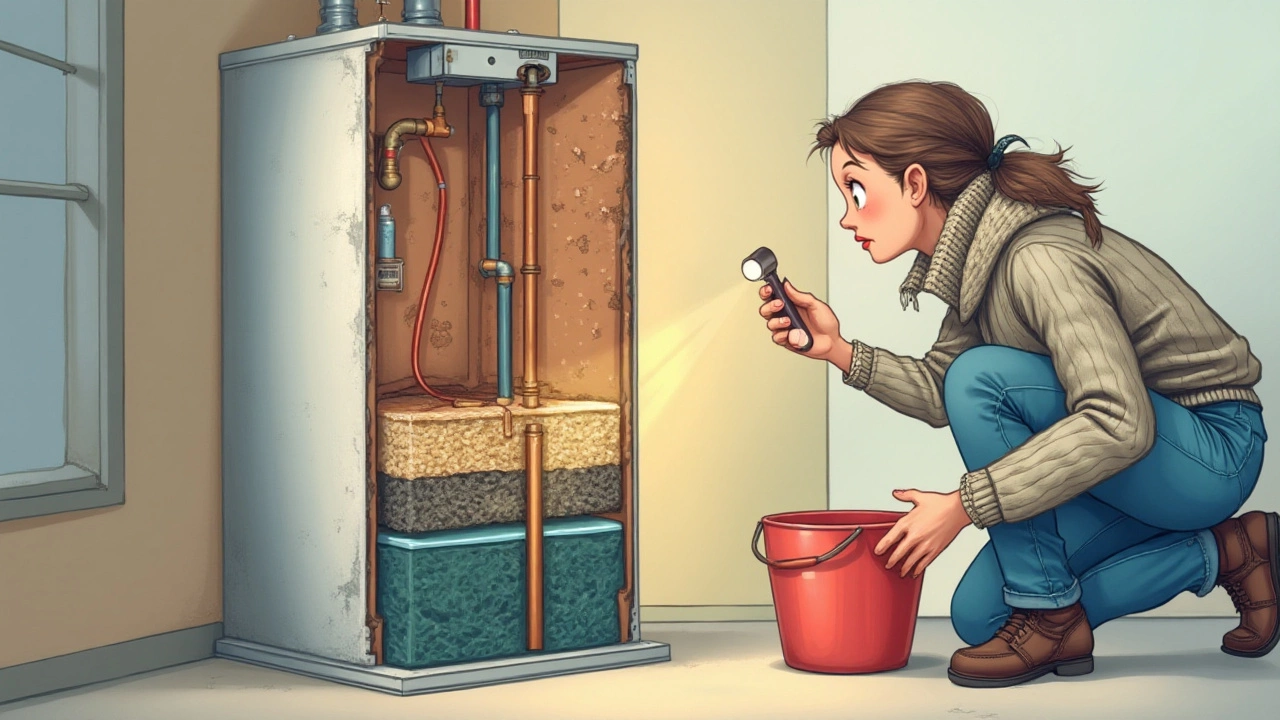
Addressing Sediment Buildup
Sediment buildup is a sneaky culprit often responsible for a water heater's poor performance. Over time, minerals present in water, like calcium and magnesium, can settle at the bottom of your heater's tank. This layer of sediment acts like an insulator, making it harder for the heater to warm the water efficiently. As a result, you might experience a frustrating dip in the available hot water, which can be quite noticeable, especially during those long, relaxing showers.
An interesting fact about sediment buildup is that it's more common in areas with hard water. High mineral content can accelerate the formation of these deposits. To combat this, regularly flushing your water heater is a simple maintenance task that can significantly extend its lifespan and improve efficiency. Not only does this help remove built-up sediment, but it also prevents your heater's tank from corroding too quickly, preserving both its performance and your peace of mind.
Flushing a water heater might sound daunting, but it's often easier than you think. Start by turning off the heater’s power supply and waiting for the water to cool. Attach a garden hose to the drain valve at the base of the tank, leading the other end to a safe drainage area. Open a hot water tap elsewhere in the house to allow air into the system, then open the drain valve. Let the water run until it appears clear and sediment-free. If it's your first time doing this, consider consulting your manufacturer’s manual for specific instructions and safety tips.
"Sediment buildup not only affects water temperature but can also increase energy consumption by up to 25% as your heater works harder to compensate," advises energy expert Linda Harper from the Home Efficiency Institute.
Aside from flushing, installing a water softener can help reduce mineral deposits, particularly in homes where hard water is prevalent. Although it's an upfront investment, a water softener can save you from frequent maintenance work and extend the life expectancy of your water heater. Sometimes, using a de-liming solution or descaling products can be alternative methods when sediment causes substantial efficiency loss. Make sure to check compatibility with your specific heater type.
In scenarios where sediment buildup becomes a chronic issue, it may be wise to consult a professional plumber. This is especially relevant if you've noticed strange noises coming from your heater such as popping or rumbling, which could indicate a more substantial sediment problem or even tank damage. A professional can perform a thorough inspection and recommend tailored solutions to mitigate the impact of hard water minerals on your heating system.
Keeping your water heater free from sediment buildup doesn’t just ensure a steady supply of hot water. It also contributes to more consistent energy bills and a smaller environmental footprint. Regular maintenance checks and a keen eye on performance will go a long way in ensuring your hot water remains just that—hot.

When to Call a Professional
Believe it or not, there come times when the best course of action for your water heater issues is to call in a professional. While there are many DIY repairs homeowners can tackle, occasionally a problem arises that requires expert intervention. Recognizing when this moment arrives is crucial to avoid causing further damage or voiding warranties that may be in place for your heater or plumbing system. A professional can diagnose problems with specialized tools and extensive training, offering solutions that DIY methods simply cannot provide.
If your hot water has suddenly turned ice cold, and a quick temperature knob adjustment does nothing to restore heat, it might be time to pick up the phone. When adjusting the thermostat yields no results, the issue might lie within the inner workings of the unit – areas and components that are best left to a certified technician. Internal problems, such as faulty or burned-out heating elements or even electrical wiring challenges, pose significant safety risks if mishandled by an untrained hand.
Another key sign that professional help is needed is when there's water pooling around the base of your water heater. While some leaks can originate from connections or valves that can be addressed at home, water at the heater's base may indicate serious issues such as tank corrosion or a crack. These are not repairs that should be attempted without the right expertise and tools. Beyond the obvious wet mess, ignoring such problems can lead to bigger inconveniences – like structural damage to your home or increased energy bills as the heater struggles to maintain temperature.
Strange noises from the heater, such as banging and popping, are also a red flag. These sounds often stem from a large sediment build-up interacting with the heating components or metal expanding within the tank. An expert familiar with your specific make and model will know the best approach to safely remove sediment and deliver long-lasting solutions, improving your heater's performance. They may also perform routine maintenance tasks as a precaution, ensuring all aspects, including valves and piping, are in prime condition.
"Don’t wait until there’s no hot water at all before getting help. A professional can help you nip potentially expensive problems in the bud," advises Emily Green, a plumbing expert with over 20 years of field experience.
Lastly, if your water heater is nearing ten years of service and repairs seem to be piling up, an experienced technician can not only perform repairs but also guide you on whether it might be more economical to replace the entire system. Newer models boast greater energy efficiency, often with environmental and financial benefits over time. A professional will help you weigh the pros and cons based on your household needs and consumption habits, ensuring you make the best choice for your home and family.
